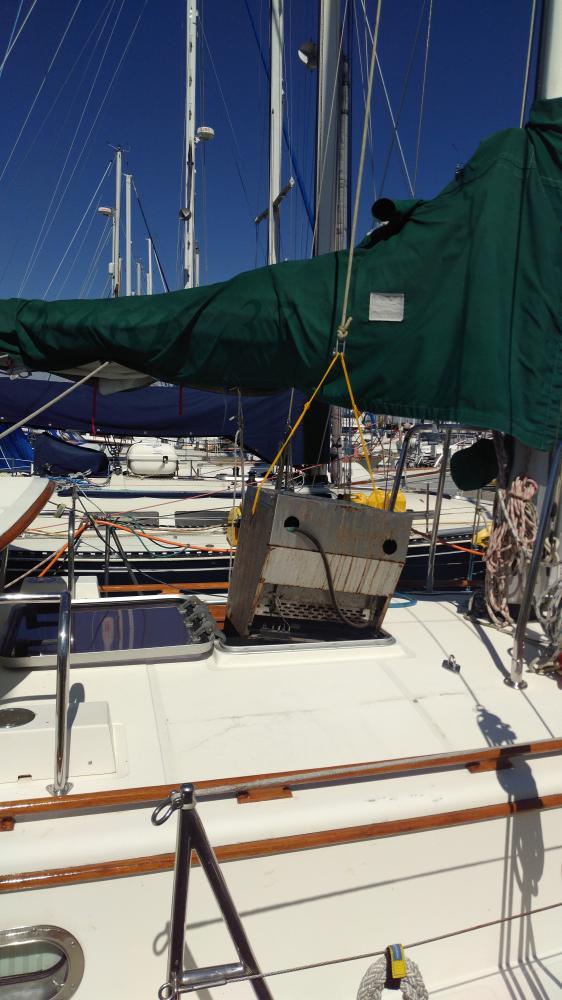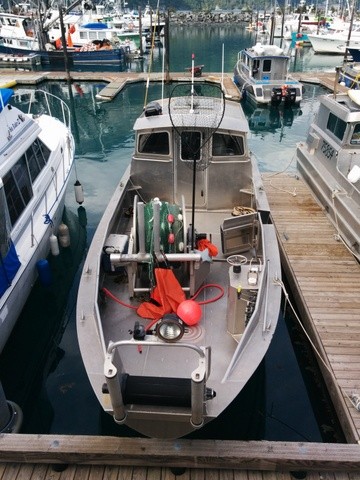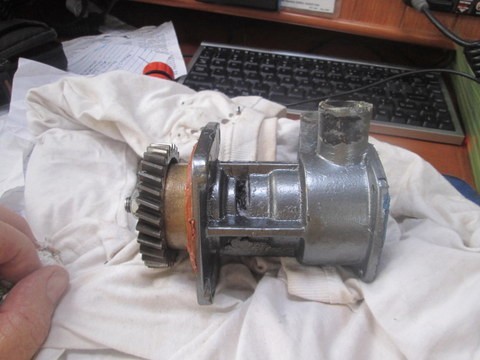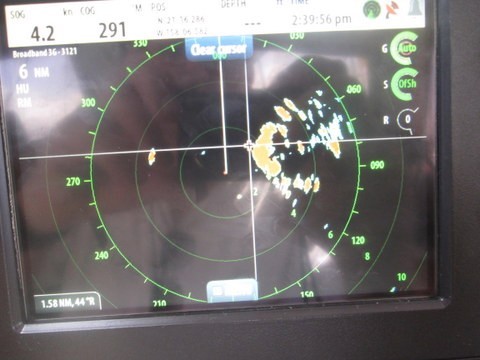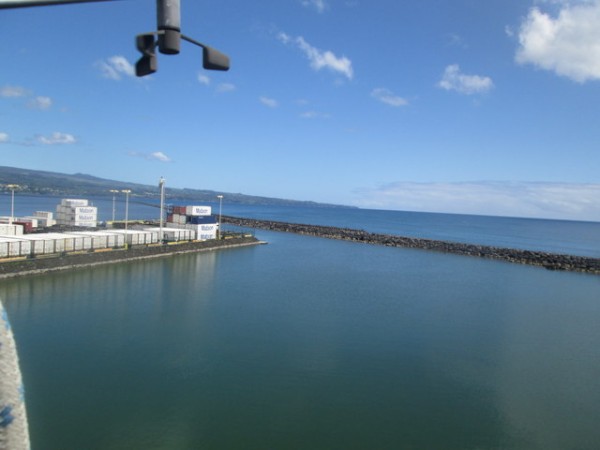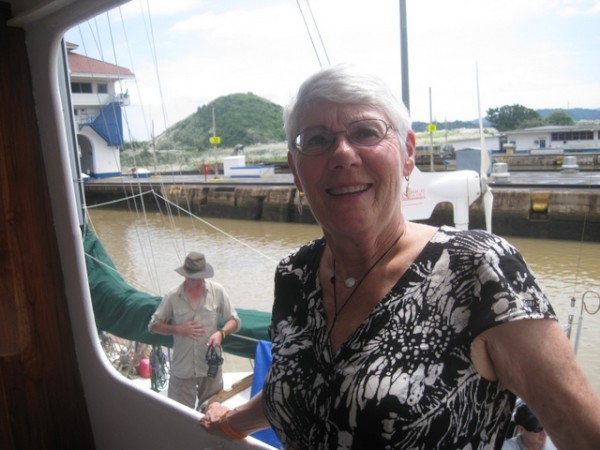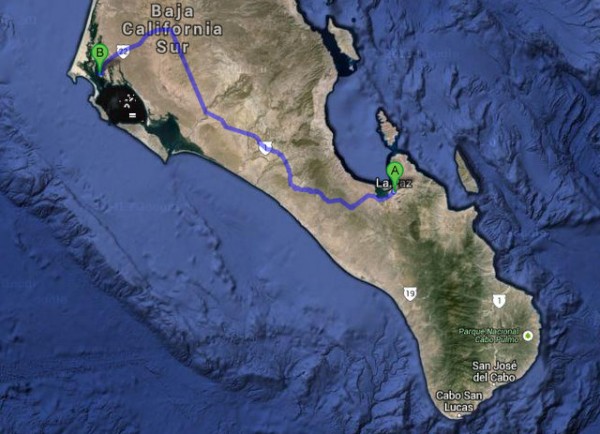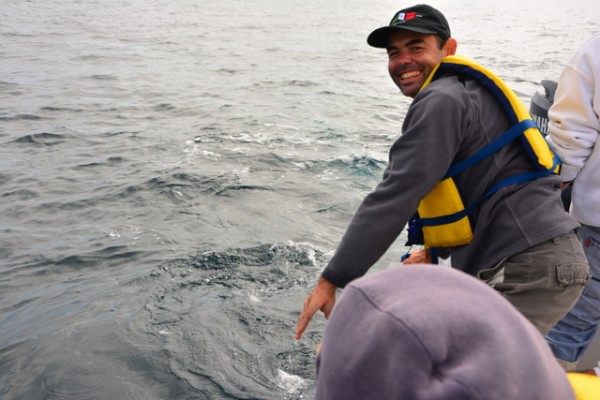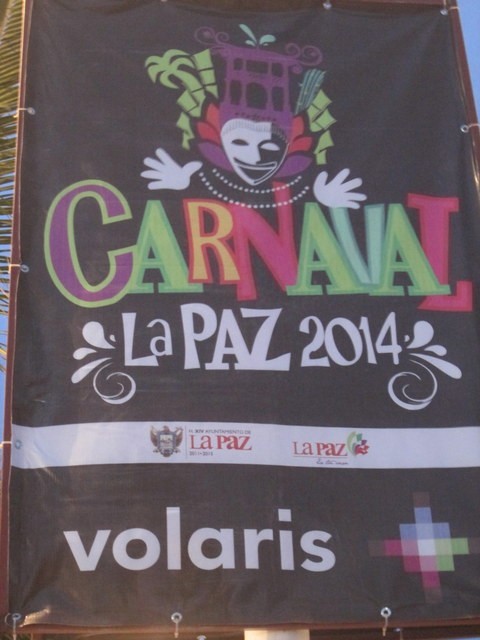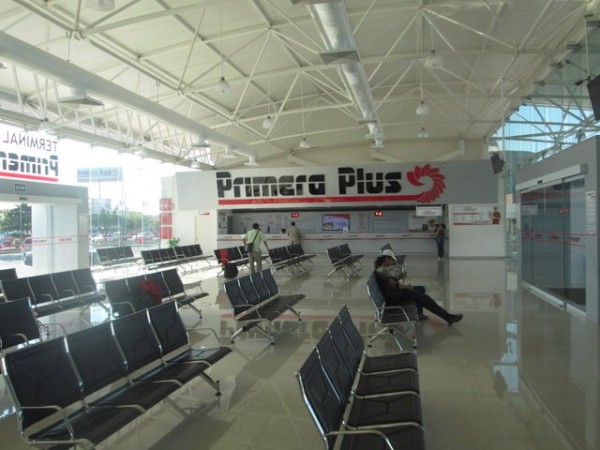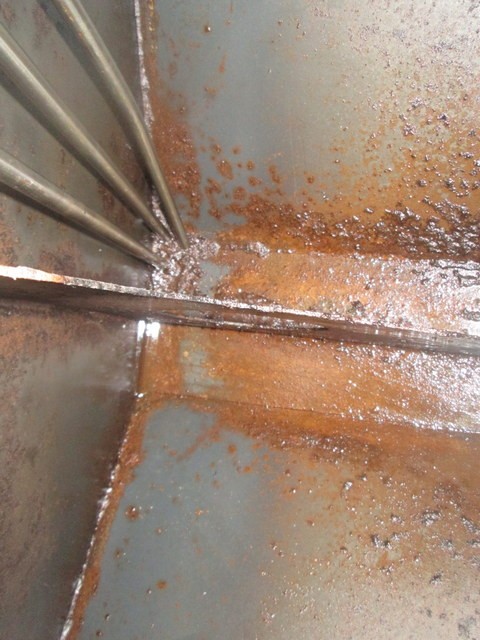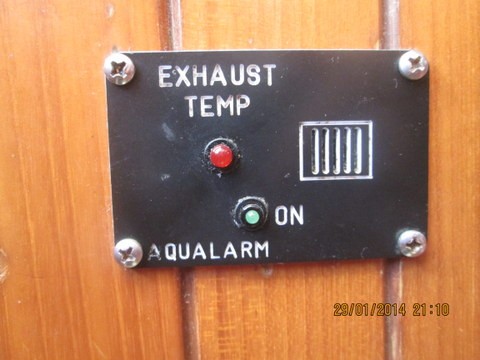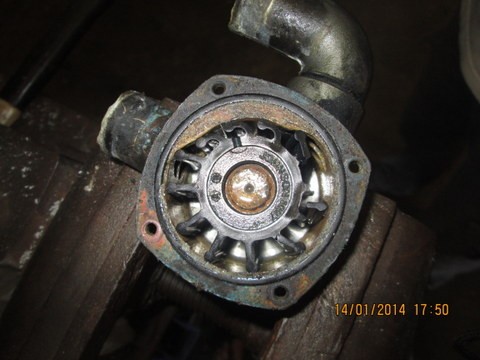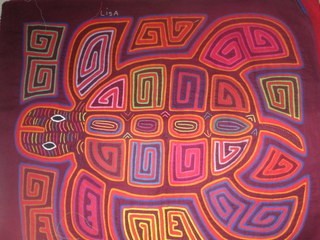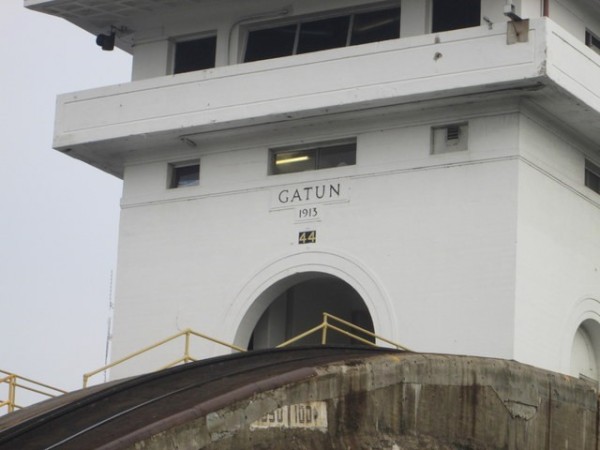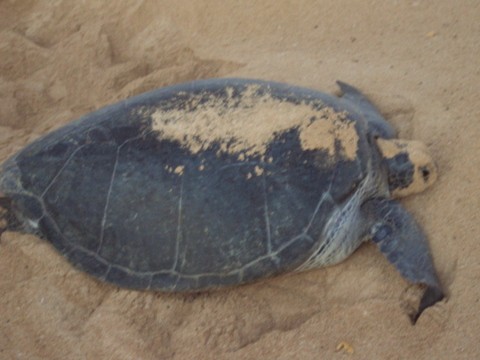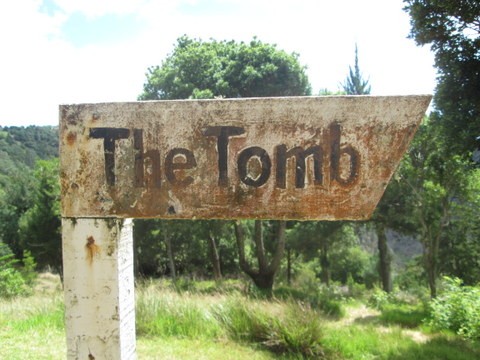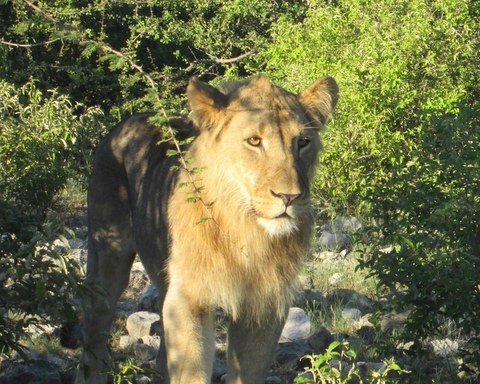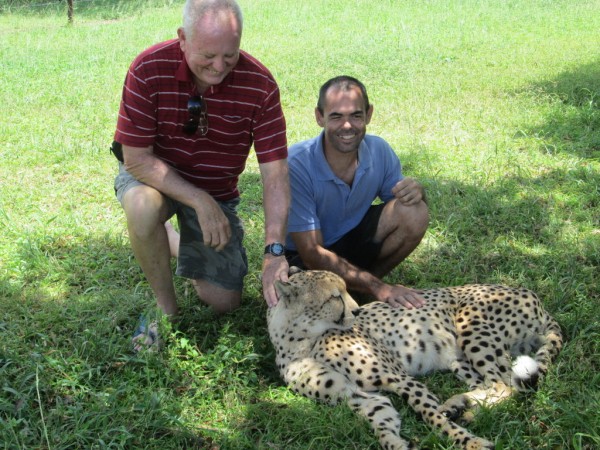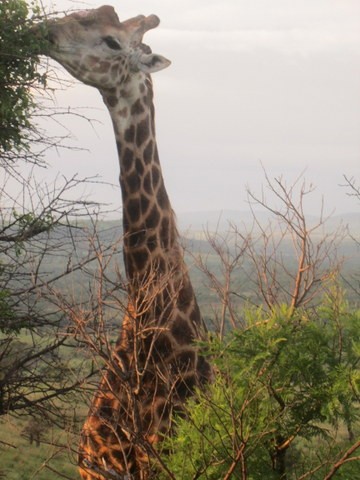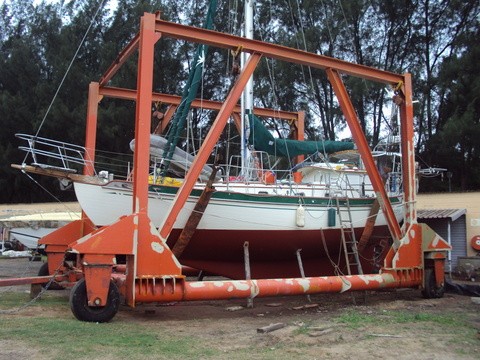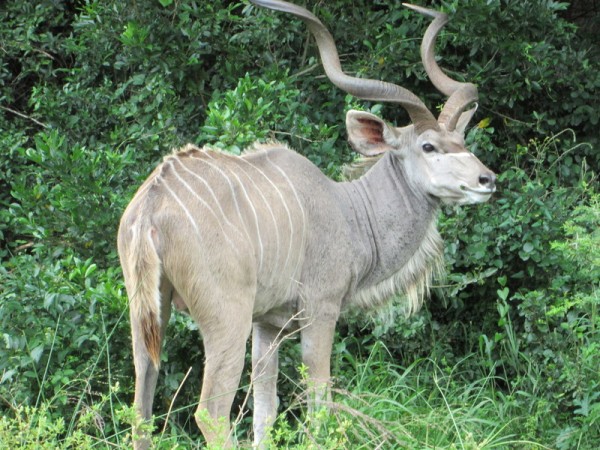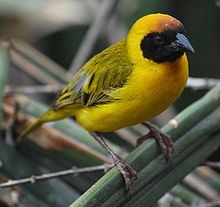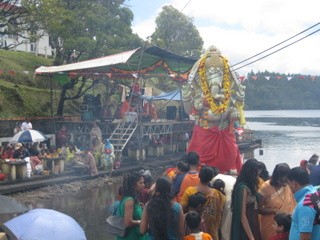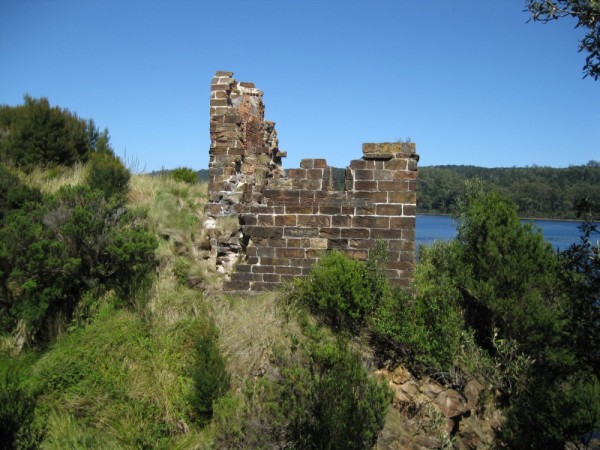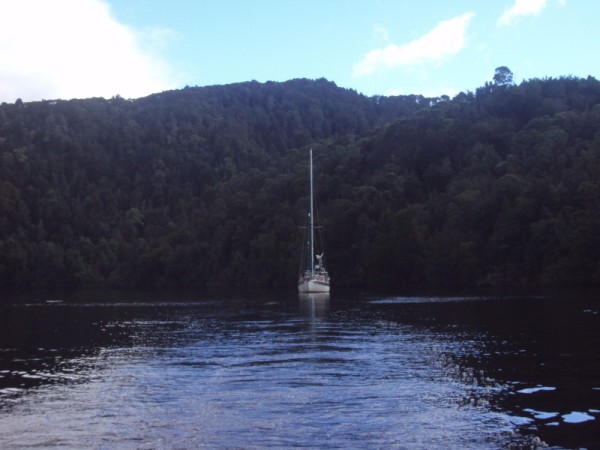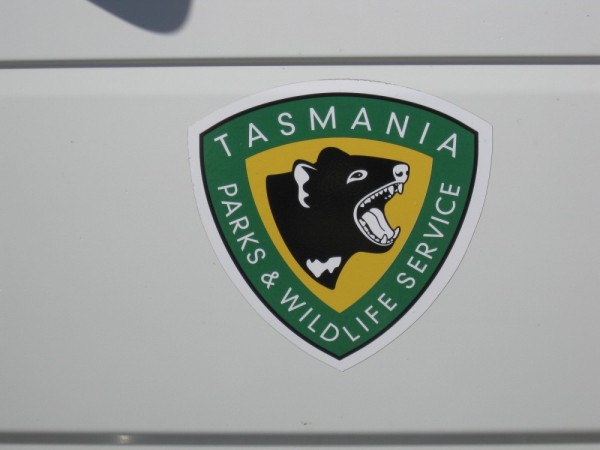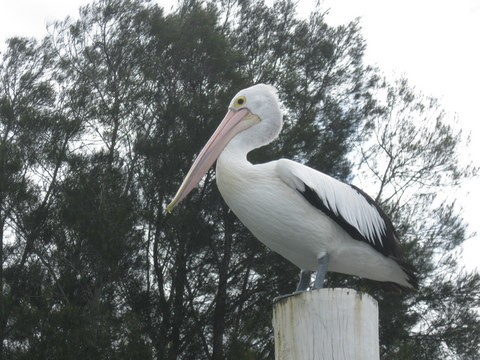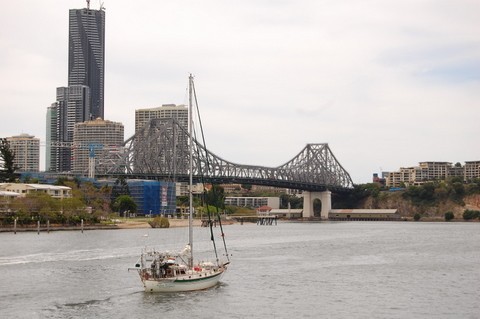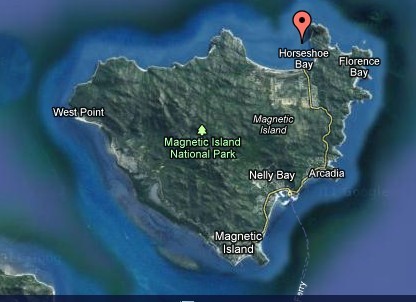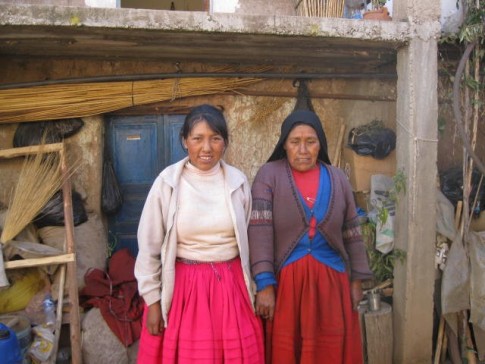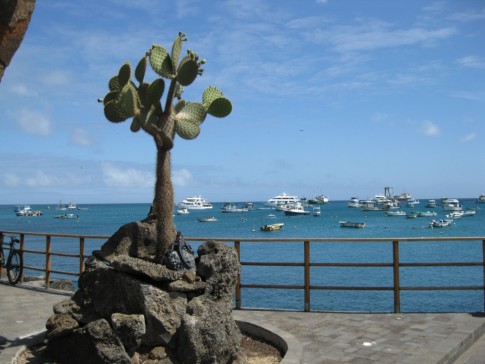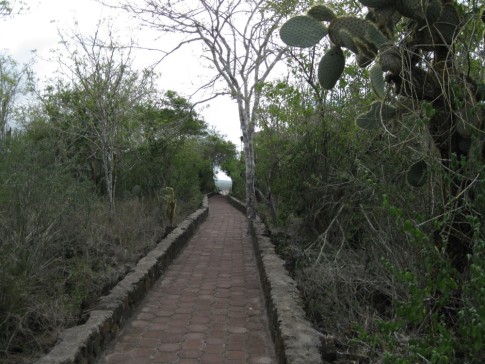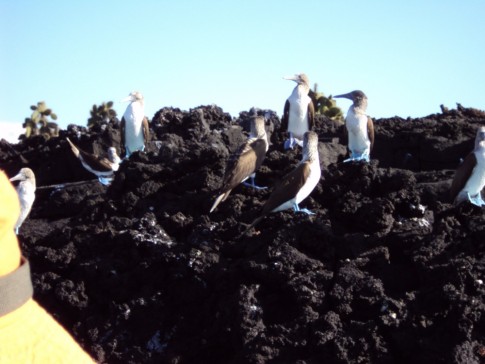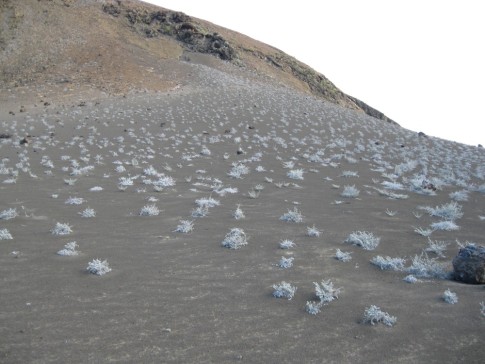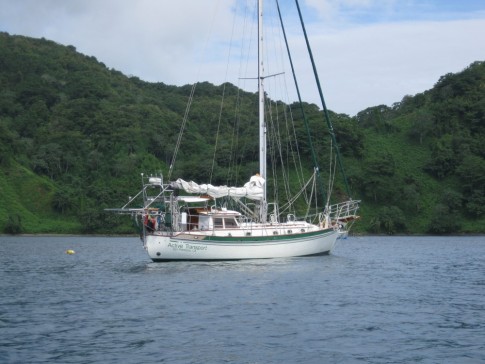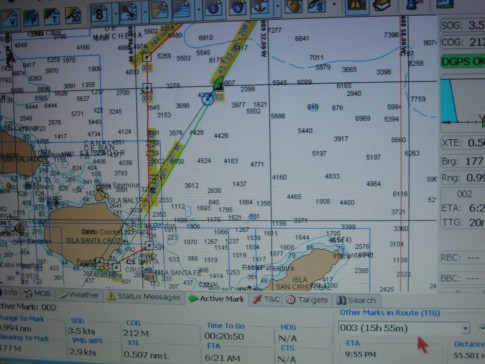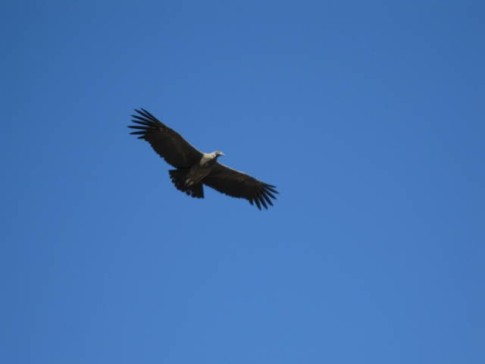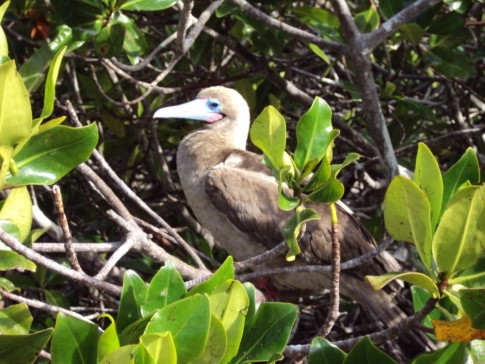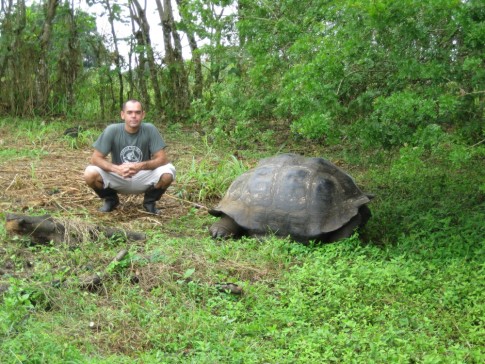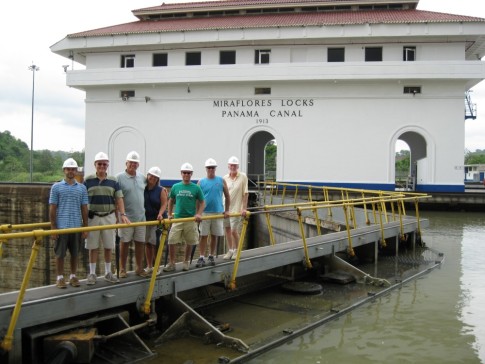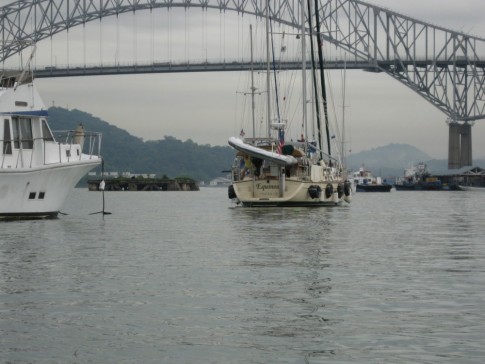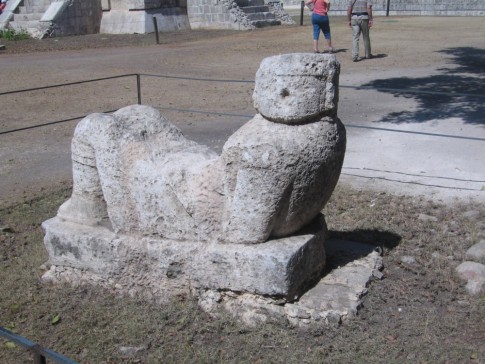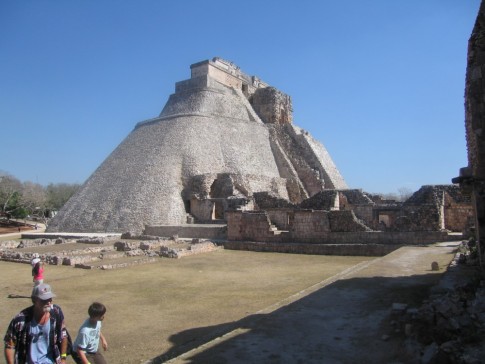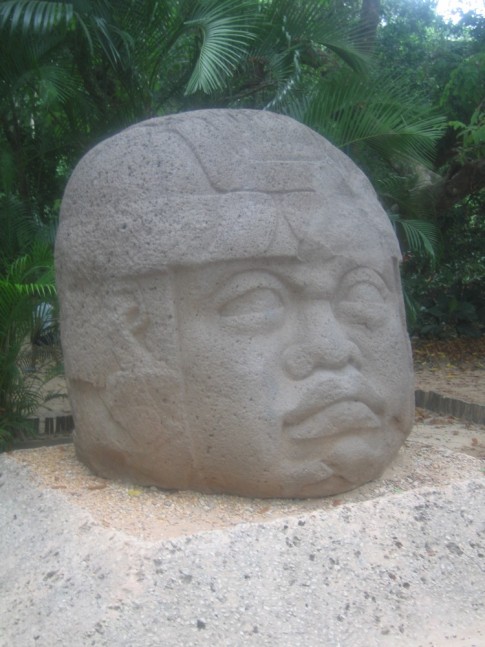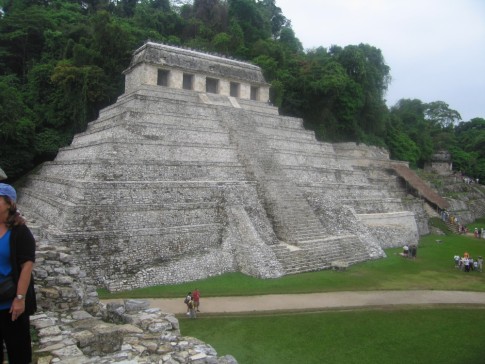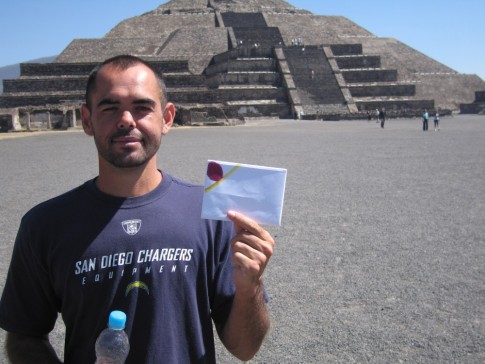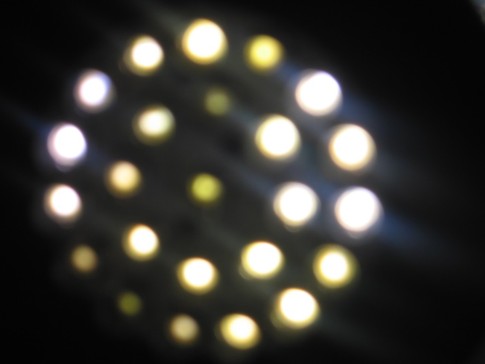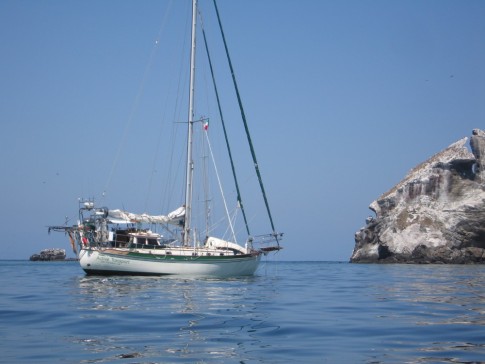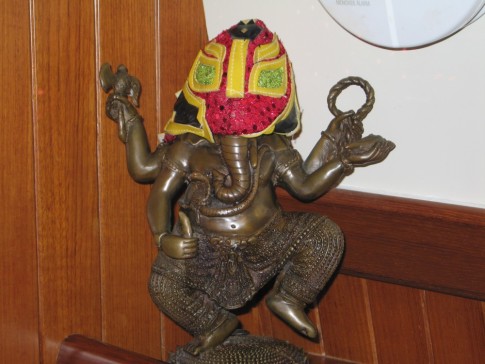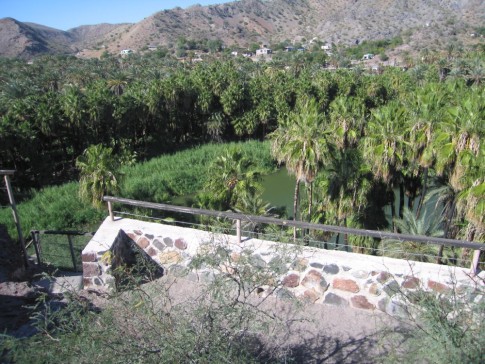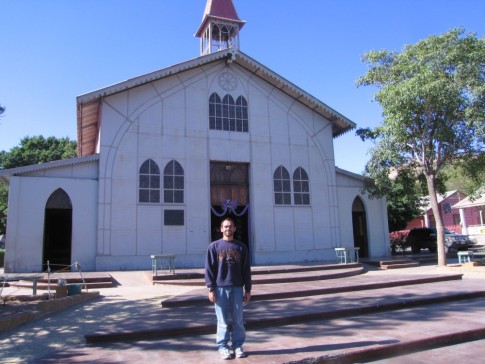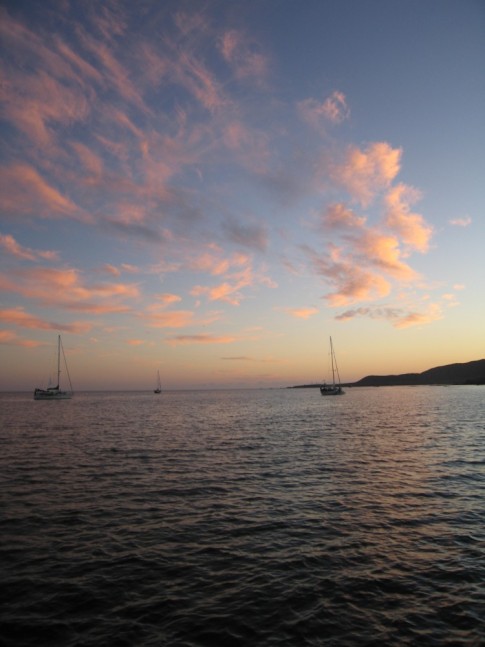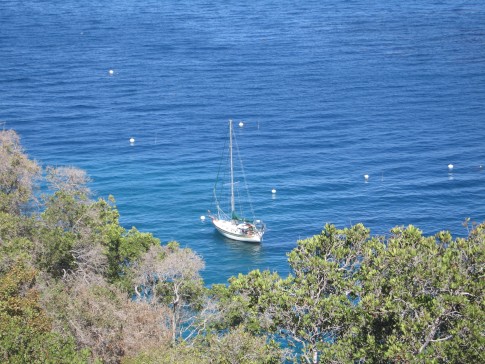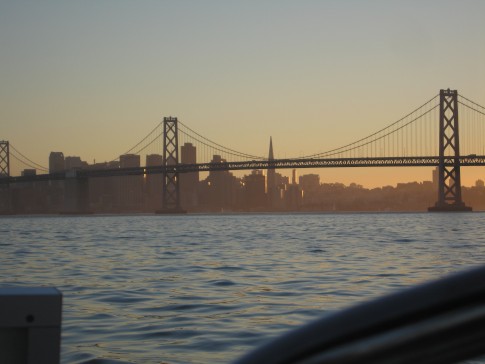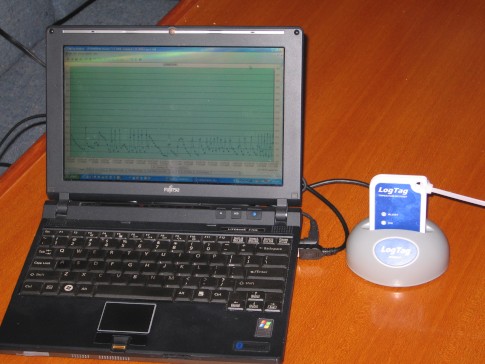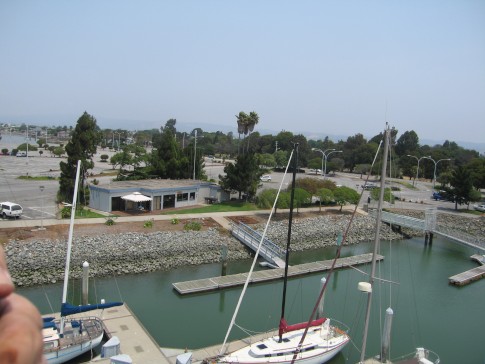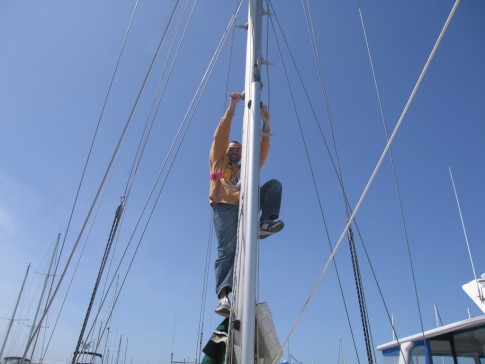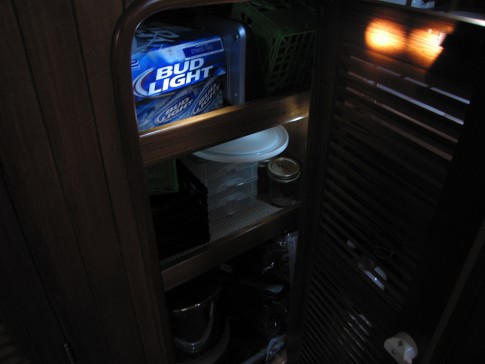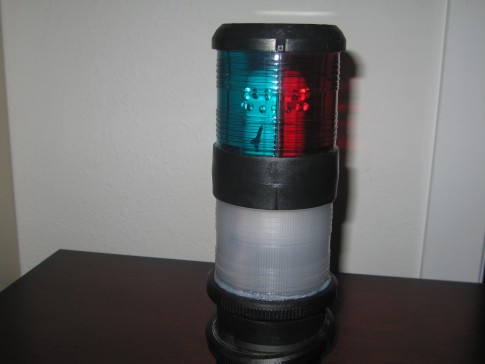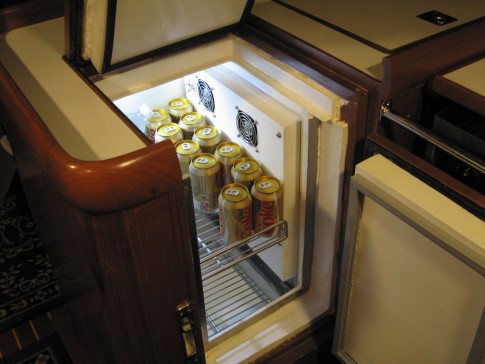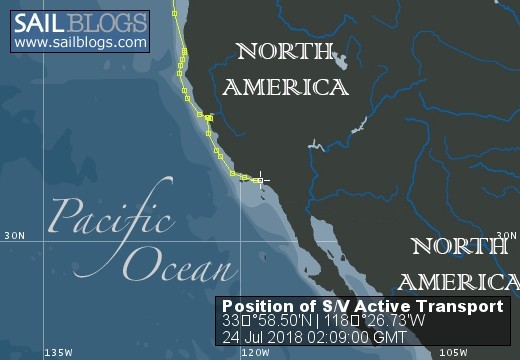
Cruising Active Transport
We circumnavigated between 2008 and 2014. After sailing to Alaska we ended up in Seattle for four years.
19 September 2018
08 August 2018 | Marina del Rey
23 July 2018 | Marina del Rey
22 July 2018 | 25 miles west of Cambria
21 July 2018 | Crossing Monterey Bay
21 July 2018 | South of the Golden Gate
16 July 2018
14 July 2018 | Grand Marina
14 July 2018 | San Francisco Bay
13 July 2018 | Point Arena
12 July 2018 | Thirty Miles NW of Humbolt Bay, CA
11 July 2018 | Crescent City
10 July 2018 | Neah Bay
09 July 2018 | Thirty five miles WNW of Reedsport, Oregon
08 July 2018 | Forty Miles West of Columbia River Entrance
07 July 2018 | Neah Bay
06 July 2018 | Neah Bay Marina
05 July 2018 | Neah Bay Marina
04 July 2018
03 July 2018 | Port Angeles City Floats
A Second Trip Through the Canal
27 July 2013 | Panam
John
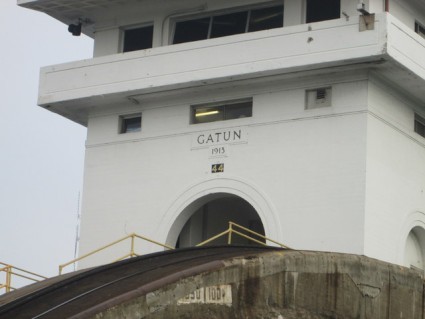
We met some folks on an Australian boat named Alessandra who were getting ready to go through the canal. After our year in Australia we anticipate the Aussies will be friendly and easy to get along with so we volunteered to serve as line handlers for their transit of the canal. It had been 5 years since we had been through on another boat that did the south to north transit and we figured the experience would serve us well when we take Active Transport through in October.
The skipper, Andrew, was doing his third transit of the canal. He has been in the business of buying boats out of the charter trade in the west indies and sailing them to Australia where he can get a lot more for them.
His second in command was a young woman named Jo who claimed to be Tasmanian but lacked evidence of the neck scars that are supposed to be identifying. She grew up sailing on the Derwent near Hobart and had just completed her yacht master training in Gibraltar.
We are not the only people who found Australia expensive (but worth it). She said the program she went through cost her $10,000 in Gibraltar but would have been $20,000 in Australia and she would not have been able to live on the boats in Australia. In the Gibraltar program she got to cruise the coast of Portugal while living on the boat. Not bad.
The third member of the crew was an American named John from Philadelphia. He was a vegetarian which was going to make provisioning for a Pacific crossing an interesting challenge. He also liked to complain a lot which is always an attractive characteristic in a shipmate. I'm skeptical about how that sort of interpersonal approach to things will work with Aussies.
Alessandra was transiting from the Caribbean to the Pacific. Most of us think of that as traveling from East to West but in the Panama canal parlance that is a trip from North to South. Look it up on google earth. The canal runs almost directly North South.
When a yacht transits the canal it must have an adviser on board, as opposed to a pilot which is required for the big ships. Advisers are canal employees who take on the adviser role as a source of extra income. Some have boating experience and others don't. They are trained in the proper procedures for taking a yacht through the canal and with the proper communication protocols but don't always have the seaman like skills you might expect. We got some of both types on our transit and I would actually say that the less seaman like guy did a better job of instructing everyone regarding what to expect.
The Canal has a daily operating schedule that starts with the northbound traffic in the morning and the southbound traffic is run through in the afternoon. The choke point is the Galliard cut which is a long straight part of the canal that cuts through the continental divide. Its a little too narrow to allow two panamax ships to pass in the cut. Technically there is enough room but the pilots refuse to do it. They think it's too risky.
So the strategy is to get all the north bound traffic into Gatun lake and then start sending the southbound traffic through. That works fine for big ships that can steam along a 10 or more knots but yachts cant go fast enough to get out the other end before dark. The canal authority requires southbound yachts to spend the night in the Lake and finish the transit the next day.
So we got started in the middle of the afternoon, went through the 3 Gatun locks that took us up the 85 feet to the level of the lake and then tied off to a mooring buoy for the night.
We got started again the following morning and were in the Pacific ocean by mid afternoon.
Our adviser for the first day was a guy named Ricardo and he brought along a trainee named Narciso (sp?). Narciso was on his last training transit and would be a qualified adviser at the end of the day.
Ricardo must have been an accountant or some similar type of employee because he did not have any of the instincts about how to manage lines that come with experience. But he did a very good job of explaining what was going to happen. That was probably because he learned it so recently that he realized that everyone was not born with the knowledge. At one point he really scared me when he started to cleat a line with a load on it He put his thumb on the inside of the line against the cleat. Nothing happened but it sure could have been a problem.
Richardo did get some dirty looks from the shore side line handlers. He was not shy about telling them what to do. From my perspective I thought that showed that he was a strong advocate for the safety of the yacht and they guys on shore resented being told what to do. Too bad.
Ricardo did have a great system to tying us to the mooring buoy. I continue to learn from everyone I sail with. As with most things in life, attitude goes a long way toward making up for any shortcomings any of us have and Ricardo has a great attitude.
We were surprised that there were no mosquitoes on the lake. We were expecting an onslaught with all the fresh water around.
The next morning the pilot boat, with our next adviser, showed up an hour late. Why they were late was never made clear but it was no big deal since we had plenty of time to get through the canal before dark.
From our mooring near the lake side of the Gatun locks it was almost a five hour motor across the lake and through the Galliard cut before we entered the locks that were going to take us down to the Pacific ocean.
When Shawn and I went through the canal in 2009 they were dynamiting the sides of the Galliard cut to widen it. The dynamite barge was not there this time but there were several dredges at work which I assume was a continuation of the same project.
The canal authority is building new locks to allow larger ships through the canal and the cut would have been an even worse bottleneck when the bigger ships started coming through. So the widening project is a critical part of their long term strategy to increase throughput. It's impressive what careful planning people do when they are thinking about projects that require cutting trenches through a continent.
We learned a lot on this second trip through the canal.
The first time we were fascinated tourists viewing one of the engineering wonders of the world. This time we were old pros and more observant of the details.
The locking up process is a lot more demanding on the line handlers on the yacht. The water rushing in from below, as the lock fills, pushes the yacht around a lot and the fin keel Benateau we were on did like to dance. The line handlers on the yacht must continually haul in on the lines as the boat rises and that requires that the 4 line handlers coordinate their efforts. The line handlers in the cockpit usually put their lines around the sheet winches and have a significant mechanical advantage over those of the foredeck. If the skipper does not pay attention the handlers in the back can pull control away from those in the front and the boat will end up misaligned as it rises.
There are three lock chambers in the Gatun lock so within an hour and a half we were lifted three times until we were 85 feet above sea level and could motor out into the lake. It was really strange to look back at the Caribbean sea several stories below us.
Ricardo was on top of the entire process. He was the most attentive adviser Shawn and I have experienced on our two transits and a really good choice to train new advisers.
Locking down is easy by comparison. The water drains from the lock much more gently than it enters on the up side. All the line handlers have to do is let the lines out slowly as the level of the water falls. Its a very mellow process.
Our adviser for that part of the transit was Alejandro who is qualified as a tug boat captain. He is soon to be through the qualification process to drive tugs in the canal. So he had a lot of hours on boats, to his credit, and tended to be a bit more blasé about things. Like many of us who have spent a lot of time on boats he probably forgot that everyone did not learn all this line handling stuff in kindergarten.
About halfway across the lake Alejandro asked if it was OK if he took off his jeans and just wore shorts. It was hotter than hell and it really seemed silly for him to be wearing jeans in the first place. But Panama still has a lot of customs that date from another age. We were cautioned to wear long pants and collared shits if we have to visit government offices and that some business will not accept customers in shorts. Alejandro did not, however, abandon the long sleeve jersey of the Panamanian soccer team that had just kicked Mexico's butt.
I experienced this same strange formality tradition at the DHL office in Peru. I had to get my cab driver to take me to a mall to buy long pants or they would not let me in the DHL compound near the Lima airport. They were admitting lots of guys with three day old beards and terminal BO but those guys were wearing long pants. Go figure.
I could not help but think that when Alejandro's generation is in charge the long pants thing will fall by the wayside pretty quickly. Maybe compulsory Panamanian soccer jerseys will be required instead.
One thing we did notice on this trip through is that the maintenance on the locks seems to be slipping. It 's possible that we did not notice those sorts of details on our way through the first time , but I don's think so.
We were told that the new locks were supposed to come on line this year and that the plan is to close the old locks for a couple of years for maintenance work. Now the new locks are scheduled to open next year. Projects of that magnitude are always full of surprises. They seem to be doing a better job of staying on schedule for the new locks than Caltrans is doing on the new bay bridge. If the plan was to shut down the old locks this year it would make sense to defer maintenance until the big rework could be done but with the delay in the new locks the maintenance issue looks like more of a problem.
The metal surfaces on the gates for the locks were in need of paint.. Buildings around the locks needed paint, or at least cleaning. We saw breaks in the concrete walls of the lock chambers where water entered when the level was high and poured back out when the level fell. We had the impression that there was a lot of erosion going on behind those 100 year old walls.
The first time we went through the canal the maintenance seemed to be first rate. That was 5 years ago.
Ill close with some observations about the cost of yachts transiting the canal. Ill probably hear a lot of crap from other cruisers about this but I think the cost of taking a yacht through the Panama canal is incredibly cheap.
The toll for taking a yacht of less than 50 feet through the canal is $800. There are a few other fees (measurement and security related) that drive the cost up to a little over $1000.
For this $1000 the yacht owner gets a full man day of the services of an adviser, several hours of the services of 4 on shore line handlers per lock (12 people) and the use of the incredibly expensive equipment that controls the gates and the inflow and outflow of water in the chambers. It takes four trips by pilot boats to deliver and retrieve the advisers for a North to South transit.
The ship that shared the Gatun locks with us probably paid somewhere near $100,000 to get through the canal and we rode in the same locks for $1000.
On top of that is the volume of water need to operate the locks. We went through all of the three down locks by ourselves. There was not ship in the lock with us. If there is a ship in the lock the ship displaces a lot of water. A yacht displaces next to nothing. So it takes a lot more water to get a yacht through the canal than a big ship.
They put us through the locks alone because the ship we were supposed lock down with was late. I'm sure the canal operators did not want to have to deal with amateur yachties after dark. So they got us on our way and our of their hair. who could blame them.
This time of year the lake that provides the water to operate the locks is full. Its the rainy season. If they did not use the water to lock us through by ourselves the water would have spilled over the Gatun dam and into the Caribbean. In the dry season I doubt they would be o quick to lock a yacht through on its own.
If you look at the value of a canal transit for a yacht the bargain is even more obvious. It would cost a yacht our size tens of thousands of dollars to sail down the east coast of South America, cross through the absolutely worst oceans on the planet to get around Cape Horn and then spend months getting back up the west coast of south America.
Im not sure how the Canal marketing folks come up with the pricing structure for pleasure boats but I think the market would tolerate a much steeper toll for yachts. We will spend more for the diesel fuel to get us from Panama to Mexico than it will cost us to get through the canal! And we are not even the 50 foot boat that would pay the same toll.
People are taking million dollar yachts through the canal and paying $800 in toll. That's wrong, especially in light of the risks the canal must deal with if there is any mishap that is the canal's fault.
The canal represents the largest component of the GNP of Panama. Subsidizing pleasure boating does not seem like something the canal authority should be doing.
If they doubled the tolls I suspect they would see little, if any, decrease in yacht traffic through the canal.
I sure as hell would not think about the Cape Horn option unless the toll was at least $20k.
If they doubled the toll and traffic fell by 50% they would be ahead because they would need half as many advisers, half as many shore side line handlers and half as many pilot boat runs.
A large percentage of the cruising community operates on the assumption that if they buy a few hamburgers in a country they are contributing to the economy and should not be expected to cover the administrative costs of their presence. From my point of view that is a lot like mooching. I dont like to be gouged on fees and avoid places that have a reputation for doing that, but we have been places where it was embarrassing to realize that we were not paying our fair share of what it costs a government to deal with foreign yachts.
Expecting a third world country to subsidize the costs of a yachting hobby just seems wrong to me.
I know that American built the canal but when when did we made a deal , with Panama, for a 99 year lease. I suspect the US got its money out of the investment over the years it operated the canal and we turned it over, as agreed, at the end of the lease.
Now the canal belongs to Panama and it is their asset to manage. The revenue it generates is essential to the prosperity of the country.
In terms of the tolls they get from commercial shipping I suppose the yacht transit business is noise level but they should at least break even on it. That can't be the case at the current fee structure.
Boy am I going to get some hate mail for this blog post.
The last time we were in Panama I wrote something negative about the quality of the beer here and got all sorts of hate mail.
After a year in Australia Panamanian beer at $12 a case seems much more attractive than it did after the few months in Mexico that preceded our last visit to Panama. I'm willing to rethink my comments on Panamanian beer but someone will have to convince me that the cost of transiting the canal is not embarrassingly cheap.
I posted pics of this canal passage to an album in our gallery
The skipper, Andrew, was doing his third transit of the canal. He has been in the business of buying boats out of the charter trade in the west indies and sailing them to Australia where he can get a lot more for them.
His second in command was a young woman named Jo who claimed to be Tasmanian but lacked evidence of the neck scars that are supposed to be identifying. She grew up sailing on the Derwent near Hobart and had just completed her yacht master training in Gibraltar.
We are not the only people who found Australia expensive (but worth it). She said the program she went through cost her $10,000 in Gibraltar but would have been $20,000 in Australia and she would not have been able to live on the boats in Australia. In the Gibraltar program she got to cruise the coast of Portugal while living on the boat. Not bad.
The third member of the crew was an American named John from Philadelphia. He was a vegetarian which was going to make provisioning for a Pacific crossing an interesting challenge. He also liked to complain a lot which is always an attractive characteristic in a shipmate. I'm skeptical about how that sort of interpersonal approach to things will work with Aussies.
Alessandra was transiting from the Caribbean to the Pacific. Most of us think of that as traveling from East to West but in the Panama canal parlance that is a trip from North to South. Look it up on google earth. The canal runs almost directly North South.
When a yacht transits the canal it must have an adviser on board, as opposed to a pilot which is required for the big ships. Advisers are canal employees who take on the adviser role as a source of extra income. Some have boating experience and others don't. They are trained in the proper procedures for taking a yacht through the canal and with the proper communication protocols but don't always have the seaman like skills you might expect. We got some of both types on our transit and I would actually say that the less seaman like guy did a better job of instructing everyone regarding what to expect.
The Canal has a daily operating schedule that starts with the northbound traffic in the morning and the southbound traffic is run through in the afternoon. The choke point is the Galliard cut which is a long straight part of the canal that cuts through the continental divide. Its a little too narrow to allow two panamax ships to pass in the cut. Technically there is enough room but the pilots refuse to do it. They think it's too risky.
So the strategy is to get all the north bound traffic into Gatun lake and then start sending the southbound traffic through. That works fine for big ships that can steam along a 10 or more knots but yachts cant go fast enough to get out the other end before dark. The canal authority requires southbound yachts to spend the night in the Lake and finish the transit the next day.
So we got started in the middle of the afternoon, went through the 3 Gatun locks that took us up the 85 feet to the level of the lake and then tied off to a mooring buoy for the night.
We got started again the following morning and were in the Pacific ocean by mid afternoon.
Our adviser for the first day was a guy named Ricardo and he brought along a trainee named Narciso (sp?). Narciso was on his last training transit and would be a qualified adviser at the end of the day.
Ricardo must have been an accountant or some similar type of employee because he did not have any of the instincts about how to manage lines that come with experience. But he did a very good job of explaining what was going to happen. That was probably because he learned it so recently that he realized that everyone was not born with the knowledge. At one point he really scared me when he started to cleat a line with a load on it He put his thumb on the inside of the line against the cleat. Nothing happened but it sure could have been a problem.
Richardo did get some dirty looks from the shore side line handlers. He was not shy about telling them what to do. From my perspective I thought that showed that he was a strong advocate for the safety of the yacht and they guys on shore resented being told what to do. Too bad.
Ricardo did have a great system to tying us to the mooring buoy. I continue to learn from everyone I sail with. As with most things in life, attitude goes a long way toward making up for any shortcomings any of us have and Ricardo has a great attitude.
We were surprised that there were no mosquitoes on the lake. We were expecting an onslaught with all the fresh water around.
The next morning the pilot boat, with our next adviser, showed up an hour late. Why they were late was never made clear but it was no big deal since we had plenty of time to get through the canal before dark.
From our mooring near the lake side of the Gatun locks it was almost a five hour motor across the lake and through the Galliard cut before we entered the locks that were going to take us down to the Pacific ocean.
When Shawn and I went through the canal in 2009 they were dynamiting the sides of the Galliard cut to widen it. The dynamite barge was not there this time but there were several dredges at work which I assume was a continuation of the same project.
The canal authority is building new locks to allow larger ships through the canal and the cut would have been an even worse bottleneck when the bigger ships started coming through. So the widening project is a critical part of their long term strategy to increase throughput. It's impressive what careful planning people do when they are thinking about projects that require cutting trenches through a continent.
We learned a lot on this second trip through the canal.
The first time we were fascinated tourists viewing one of the engineering wonders of the world. This time we were old pros and more observant of the details.
The locking up process is a lot more demanding on the line handlers on the yacht. The water rushing in from below, as the lock fills, pushes the yacht around a lot and the fin keel Benateau we were on did like to dance. The line handlers on the yacht must continually haul in on the lines as the boat rises and that requires that the 4 line handlers coordinate their efforts. The line handlers in the cockpit usually put their lines around the sheet winches and have a significant mechanical advantage over those of the foredeck. If the skipper does not pay attention the handlers in the back can pull control away from those in the front and the boat will end up misaligned as it rises.
There are three lock chambers in the Gatun lock so within an hour and a half we were lifted three times until we were 85 feet above sea level and could motor out into the lake. It was really strange to look back at the Caribbean sea several stories below us.
Ricardo was on top of the entire process. He was the most attentive adviser Shawn and I have experienced on our two transits and a really good choice to train new advisers.
Locking down is easy by comparison. The water drains from the lock much more gently than it enters on the up side. All the line handlers have to do is let the lines out slowly as the level of the water falls. Its a very mellow process.
Our adviser for that part of the transit was Alejandro who is qualified as a tug boat captain. He is soon to be through the qualification process to drive tugs in the canal. So he had a lot of hours on boats, to his credit, and tended to be a bit more blasé about things. Like many of us who have spent a lot of time on boats he probably forgot that everyone did not learn all this line handling stuff in kindergarten.
About halfway across the lake Alejandro asked if it was OK if he took off his jeans and just wore shorts. It was hotter than hell and it really seemed silly for him to be wearing jeans in the first place. But Panama still has a lot of customs that date from another age. We were cautioned to wear long pants and collared shits if we have to visit government offices and that some business will not accept customers in shorts. Alejandro did not, however, abandon the long sleeve jersey of the Panamanian soccer team that had just kicked Mexico's butt.
I experienced this same strange formality tradition at the DHL office in Peru. I had to get my cab driver to take me to a mall to buy long pants or they would not let me in the DHL compound near the Lima airport. They were admitting lots of guys with three day old beards and terminal BO but those guys were wearing long pants. Go figure.
I could not help but think that when Alejandro's generation is in charge the long pants thing will fall by the wayside pretty quickly. Maybe compulsory Panamanian soccer jerseys will be required instead.
One thing we did notice on this trip through is that the maintenance on the locks seems to be slipping. It 's possible that we did not notice those sorts of details on our way through the first time , but I don's think so.
We were told that the new locks were supposed to come on line this year and that the plan is to close the old locks for a couple of years for maintenance work. Now the new locks are scheduled to open next year. Projects of that magnitude are always full of surprises. They seem to be doing a better job of staying on schedule for the new locks than Caltrans is doing on the new bay bridge. If the plan was to shut down the old locks this year it would make sense to defer maintenance until the big rework could be done but with the delay in the new locks the maintenance issue looks like more of a problem.
The metal surfaces on the gates for the locks were in need of paint.. Buildings around the locks needed paint, or at least cleaning. We saw breaks in the concrete walls of the lock chambers where water entered when the level was high and poured back out when the level fell. We had the impression that there was a lot of erosion going on behind those 100 year old walls.
The first time we went through the canal the maintenance seemed to be first rate. That was 5 years ago.
Ill close with some observations about the cost of yachts transiting the canal. Ill probably hear a lot of crap from other cruisers about this but I think the cost of taking a yacht through the Panama canal is incredibly cheap.
The toll for taking a yacht of less than 50 feet through the canal is $800. There are a few other fees (measurement and security related) that drive the cost up to a little over $1000.
For this $1000 the yacht owner gets a full man day of the services of an adviser, several hours of the services of 4 on shore line handlers per lock (12 people) and the use of the incredibly expensive equipment that controls the gates and the inflow and outflow of water in the chambers. It takes four trips by pilot boats to deliver and retrieve the advisers for a North to South transit.
The ship that shared the Gatun locks with us probably paid somewhere near $100,000 to get through the canal and we rode in the same locks for $1000.
On top of that is the volume of water need to operate the locks. We went through all of the three down locks by ourselves. There was not ship in the lock with us. If there is a ship in the lock the ship displaces a lot of water. A yacht displaces next to nothing. So it takes a lot more water to get a yacht through the canal than a big ship.
They put us through the locks alone because the ship we were supposed lock down with was late. I'm sure the canal operators did not want to have to deal with amateur yachties after dark. So they got us on our way and our of their hair. who could blame them.
This time of year the lake that provides the water to operate the locks is full. Its the rainy season. If they did not use the water to lock us through by ourselves the water would have spilled over the Gatun dam and into the Caribbean. In the dry season I doubt they would be o quick to lock a yacht through on its own.
If you look at the value of a canal transit for a yacht the bargain is even more obvious. It would cost a yacht our size tens of thousands of dollars to sail down the east coast of South America, cross through the absolutely worst oceans on the planet to get around Cape Horn and then spend months getting back up the west coast of south America.
Im not sure how the Canal marketing folks come up with the pricing structure for pleasure boats but I think the market would tolerate a much steeper toll for yachts. We will spend more for the diesel fuel to get us from Panama to Mexico than it will cost us to get through the canal! And we are not even the 50 foot boat that would pay the same toll.
People are taking million dollar yachts through the canal and paying $800 in toll. That's wrong, especially in light of the risks the canal must deal with if there is any mishap that is the canal's fault.
The canal represents the largest component of the GNP of Panama. Subsidizing pleasure boating does not seem like something the canal authority should be doing.
If they doubled the tolls I suspect they would see little, if any, decrease in yacht traffic through the canal.
I sure as hell would not think about the Cape Horn option unless the toll was at least $20k.
If they doubled the toll and traffic fell by 50% they would be ahead because they would need half as many advisers, half as many shore side line handlers and half as many pilot boat runs.
A large percentage of the cruising community operates on the assumption that if they buy a few hamburgers in a country they are contributing to the economy and should not be expected to cover the administrative costs of their presence. From my point of view that is a lot like mooching. I dont like to be gouged on fees and avoid places that have a reputation for doing that, but we have been places where it was embarrassing to realize that we were not paying our fair share of what it costs a government to deal with foreign yachts.
Expecting a third world country to subsidize the costs of a yachting hobby just seems wrong to me.
I know that American built the canal but when when did we made a deal , with Panama, for a 99 year lease. I suspect the US got its money out of the investment over the years it operated the canal and we turned it over, as agreed, at the end of the lease.
Now the canal belongs to Panama and it is their asset to manage. The revenue it generates is essential to the prosperity of the country.
In terms of the tolls they get from commercial shipping I suppose the yacht transit business is noise level but they should at least break even on it. That can't be the case at the current fee structure.
Boy am I going to get some hate mail for this blog post.
The last time we were in Panama I wrote something negative about the quality of the beer here and got all sorts of hate mail.
After a year in Australia Panamanian beer at $12 a case seems much more attractive than it did after the few months in Mexico that preceded our last visit to Panama. I'm willing to rethink my comments on Panamanian beer but someone will have to convince me that the cost of transiting the canal is not embarrassingly cheap.
I posted pics of this canal passage to an album in our gallery
Comments
| Vessel Name: | Active Transport |
| Vessel Make/Model: | Tayana 37 PH |
| Hailing Port: | Seattle, Washington |
| Crew: | John and Shawn |
| About: | |
| Extra: |
Active Transport's Photos - Cruising Active Transport (Main)
|
These are a few pics we took during the weekend we spent at Blake Island.
8 Photos
Created 6 June 2015
|
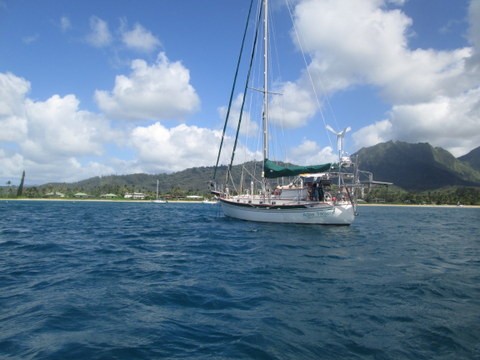 |
We spent a few days anchored i Hanalei Bay while we got the boat and our attitudes prepared for the sail to Alaska
4 Photos
Created 15 June 2014
|
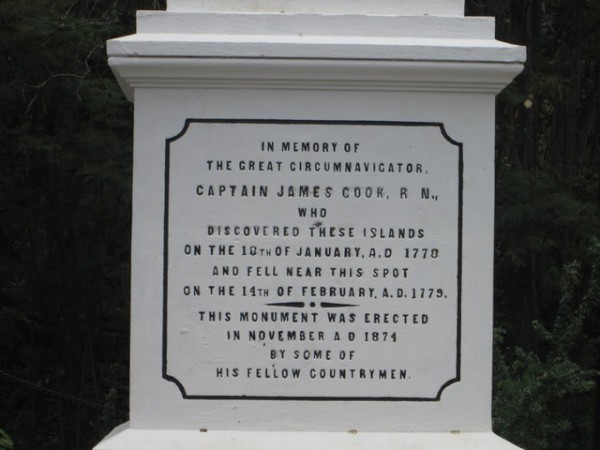 |
Captain James Cook, the famous British explorer, was killed here when an attempt to kidnap the local king did not work out as planned. A monument now marks the spot.
7 Photos
Created 5 May 2014
|
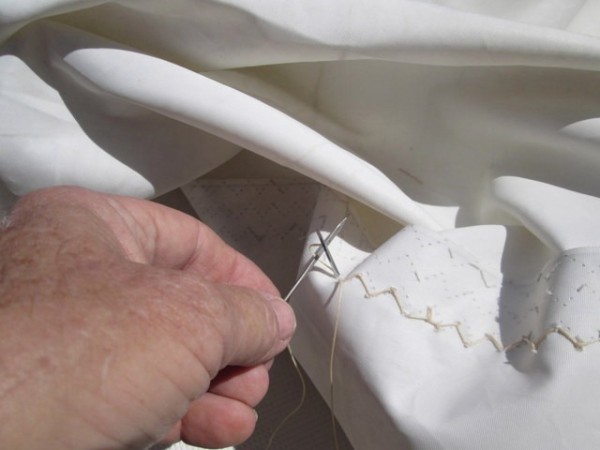 |
This album contains photos that were taken on our passage from La Paz to Hilo. We were unable to upload any of them while at sea
19 Photos
Created 27 April 2014
|
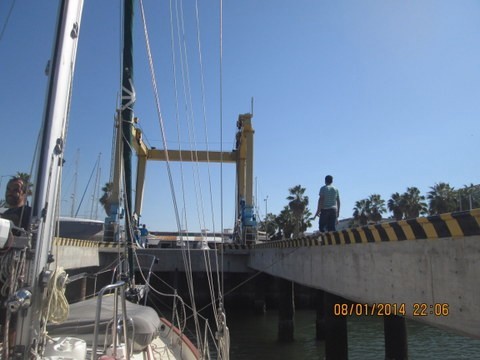 |
Our engine was overdue for a lot of maintenance so we had it pulled out of the boat. this album will hold the photos of the process.
44 Photos
Created 11 January 2014
|
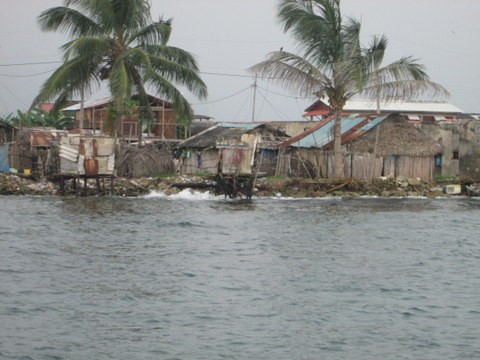 |
Nargana Town is a modern Guna village that has abandoned traditional ways and has electricity, televisions, beer and rum.
4 Photos
Created 25 September 2013
|
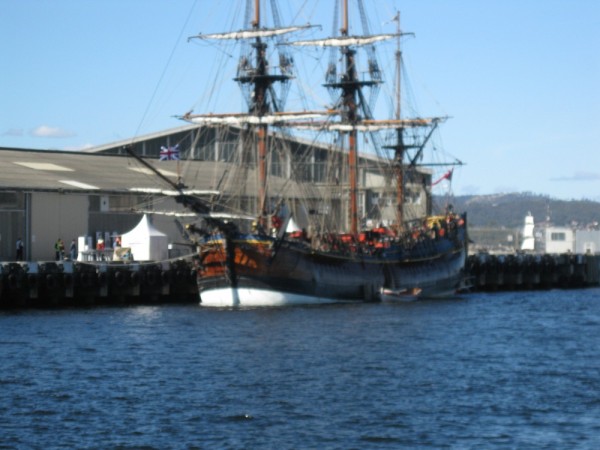 |
Hobart is the capital of Tasmania and the largest city. Large is a strong word to use for Hobart. It was originally called "Hobart Town" and that seems to fit.
7 Photos
Created 26 March 2012
|
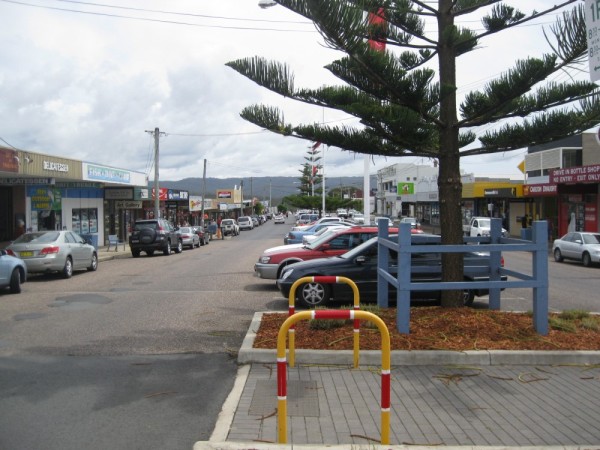 |
This album contains a variety of pictures we took while visiting Eden, a delightful little town on the south east corner of Australia.
6 Photos
Created 10 February 2012
|
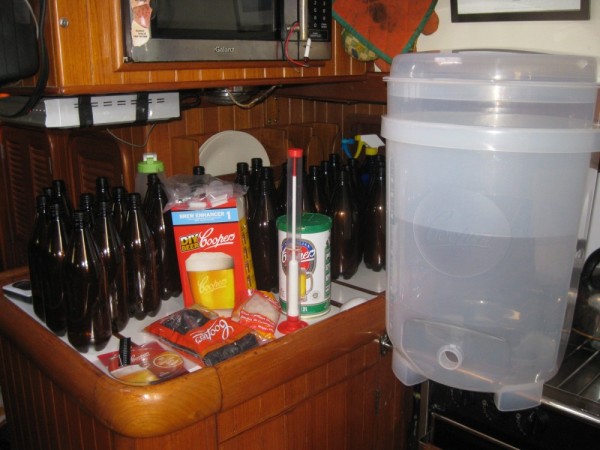 |
This album contains photos of various stages in the brewing process for making beer on board.
2 Photos
Created 17 January 2012
|
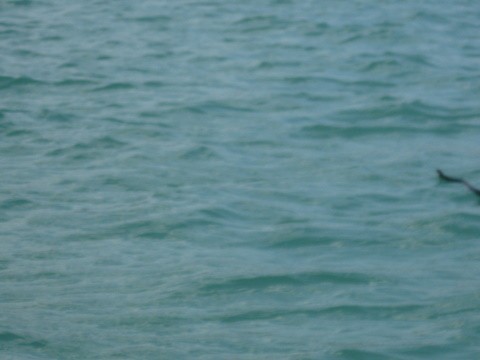 |
Most of Magnetic Island is a National Park so there are lots of hiking trails. We decided to take the hike that goes out to some WWII fortifications.
19 Photos
Created 4 October 2011
|
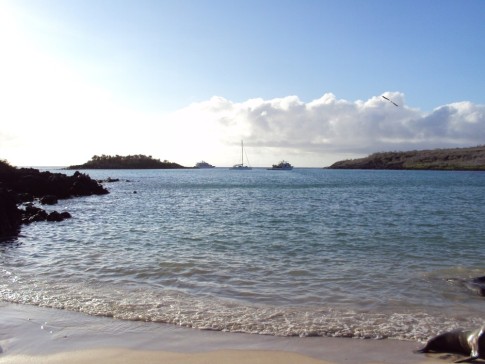 |
This island is also called Barrington Island and is the only island with the specific species of land iguana that is shown in our photos.
7 Photos
Created 8 January 2010
|
 |
this is a place holder for our pics of La Punta Callao. Pics will be added soon
No Photos
Created 22 October 2009
|
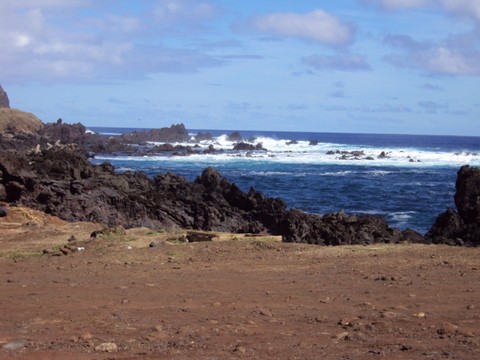 |
this is a place holder for our easter island pics...will add them soon
28 Photos
Created 22 October 2009
|
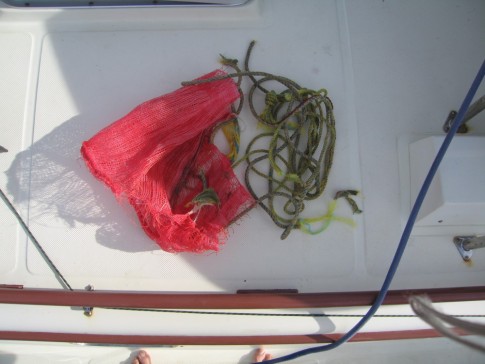 |
We picked up some junk on our prop while motoring from Puerto Escondido to San Evaristo. The pics in this album provide a few details
3 Photos
Created 9 January 2009
|
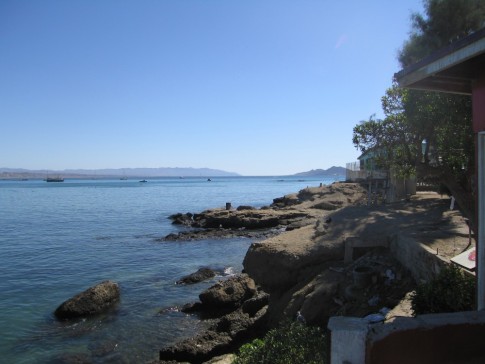 |
Photos taken during our trip ashore in the remote coastal town of Bahia Tortugas.
6 Photos | 1 Sub-Album
Created 26 November 2008
|
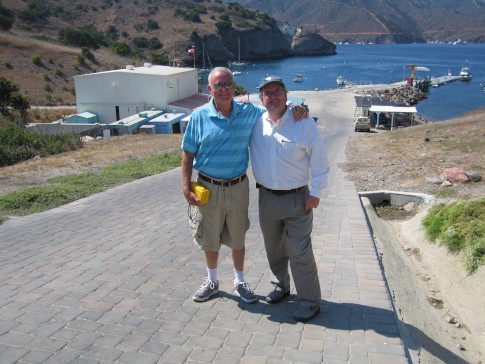 |
The photos in this album show details of our visit to the USC marine lab on Catalina Island.
3 Photos
Created 17 October 2008
|
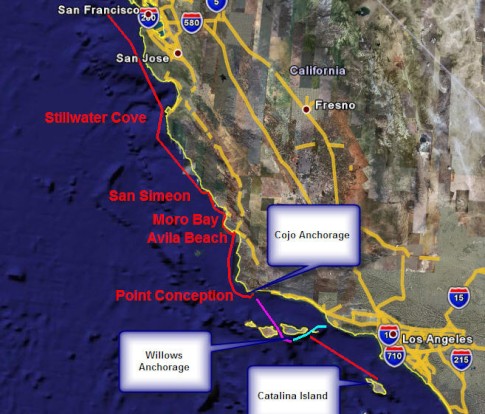 |
This album contains pictures of anchorages, coastline details and people. These photos were taken during our sail down the coast toward Southern California
19 Photos
Created 17 October 2008
|
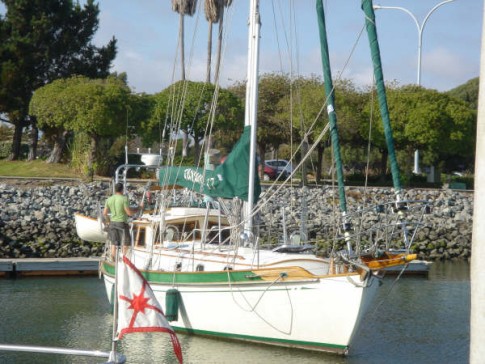 |
This album contains photos from the party we had prior to our departure.
12 Photos
Created 15 September 2008
|
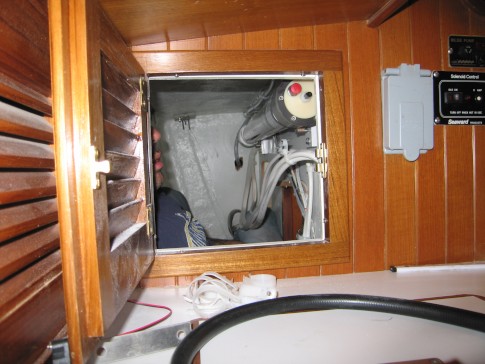 |
Well, it does not really "make" water. What it does is turn sea water into fresh water.
9 Photos
Created 11 July 2008
|
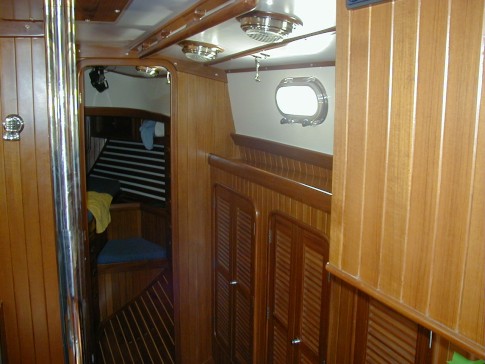 |
The photos in this album show the boat shortly after it was commissioned. I will post another album after we have finished our modifications and are ready to shove off.
8 Photos
Created 26 March 2008
|
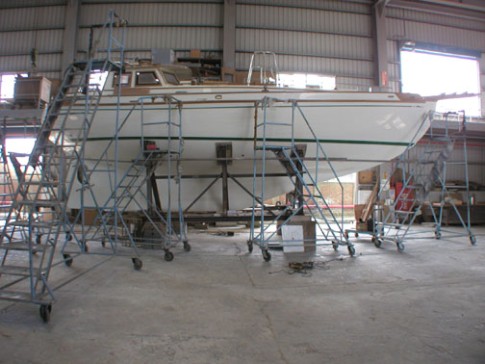 |
The yard provided pictures of the boat at various stages of construction and I have assembled a few of them here to show the process.
7 Photos
Created 26 March 2008
|
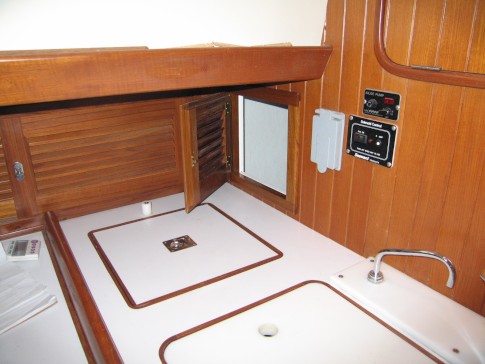 |
This album contains some pics of the modifications we made to the lockers that run along each side of the pilot house.
4 Photos
Created 5 March 2008
|
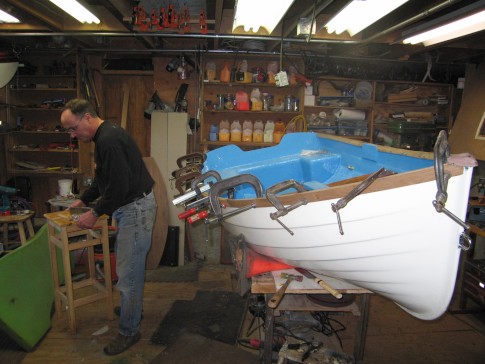 |
These pics show what we did to bring our 30 year old dingy back to life and a couple of enhancements we made that make this a serviceable tender for Active Transport
6 Photos
Created 20 February 2008
|
On the hook in Tomales Bay
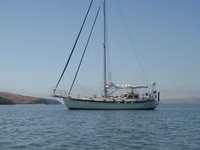
Who: John and Shawn
Port: Seattle, Washington
